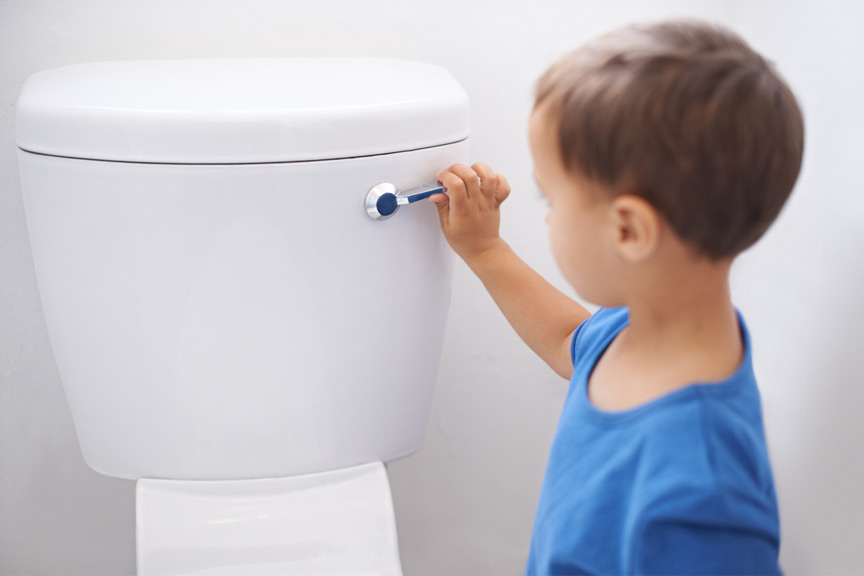
It certainly seems like a smelly subject, but bowel movements are an important part of a healthy, functioning body. Your child’s poo can tell you if they’re eating enough, eating healthy, and if their internal features (e.g., organs) are functioning properly.
While your child might find toilet talk hilarious, it’s an area where parents can get a real insight into their health and wellbeing and how to take action when needed. For example, checking the consistency of a baby’s poo can help indicate whether they’re getting enough milk. The frequency or smell of your child’s poo can signal if they’re constipated or experiencing internal distress and need to see a doctor.
Everyone has different toilet habits, but here are some things to be mindful of when it comes your child’s poo and their health.
Keep an eye on colour
The familiar brown colour is what you should expect when your child has a healthy bowel movement. Generally, if their poo is any other colour, it’s important to see a doctor. If you see red on the toilet paper, it may indicate that your child has wiped too vigorously, or a small tear in their rectum from pushing too hard. This will heal over time, but if their poo itself appears red it might indicate internal bleeding, which needs immediate attention.
Babies poos are a phenomenon. From the time they are newborn over their first week, it can change from green-black in colour and very sticky to greener, and then more orange-brown. This is common as their diet continues to change through the different stages of breast milk and solid foods. Very light, white, pale yellow or grey poos in a baby with jaundice must be checked with a doctor. However, once your child is older their poos can vary with diet but should remain consistent.
Frequency – what’s considered ‘normal’?
There is a huge range for children’s and adult’s habits, all within the realm of normal.
Babies can do a poo after each feed or a couple of times a week. However, once children are older, they generally do a poo between once a day and two times a week.
If you child is going to the toilet less than once a week, it’s recommended you monitor their toilet habits when they do go, including the shape and consistency of their poo, as it might be a sign that they’re constipated.
Shape and consistency can indicate internal health
Ideally, your child should be passing poo that is smooth and soft.
If their poo looks like:
- rabbit droppings – separate hard lumps
- a bunch of grapes – sausage-shaped but lumpy.
It might be an indication that their bowel movements are uncomfortable, with hard, lumpy poo that is difficult to pass. It can also be a sign of constipation.
Constipation in children is very common. Your child is most likely to get constipated when they first start eating solids, when they are toilet training, and when they start school. They may be more likely to hold in their poos if it’s uncomfortable for them to go, they don’t like the toilet, or if even they are busy playing.
This can make their situation worse. In extreme situations, constipation can lead to ulcers, incontinence and faecal impaction.
How to manage and avoid constipation
When your child is constipated, encourage your child to drink plenty of water and to attempt to go to the toilet regularly.
A stool softener can be helpful to get into a better pattern, or as a longer-term measure to help the body return to normal functioning.
Offer more fibre-rich foods such as whole fruits and vegetables and cereals, breads and high-fibre pasta and rice. Exercise also helps move things along so get them running around outside.
Useful websites
- Fact sheet: Constipation
- Fact sheet: Is my baby getting enough breastmilk?
- Children’s Bristol stool chart